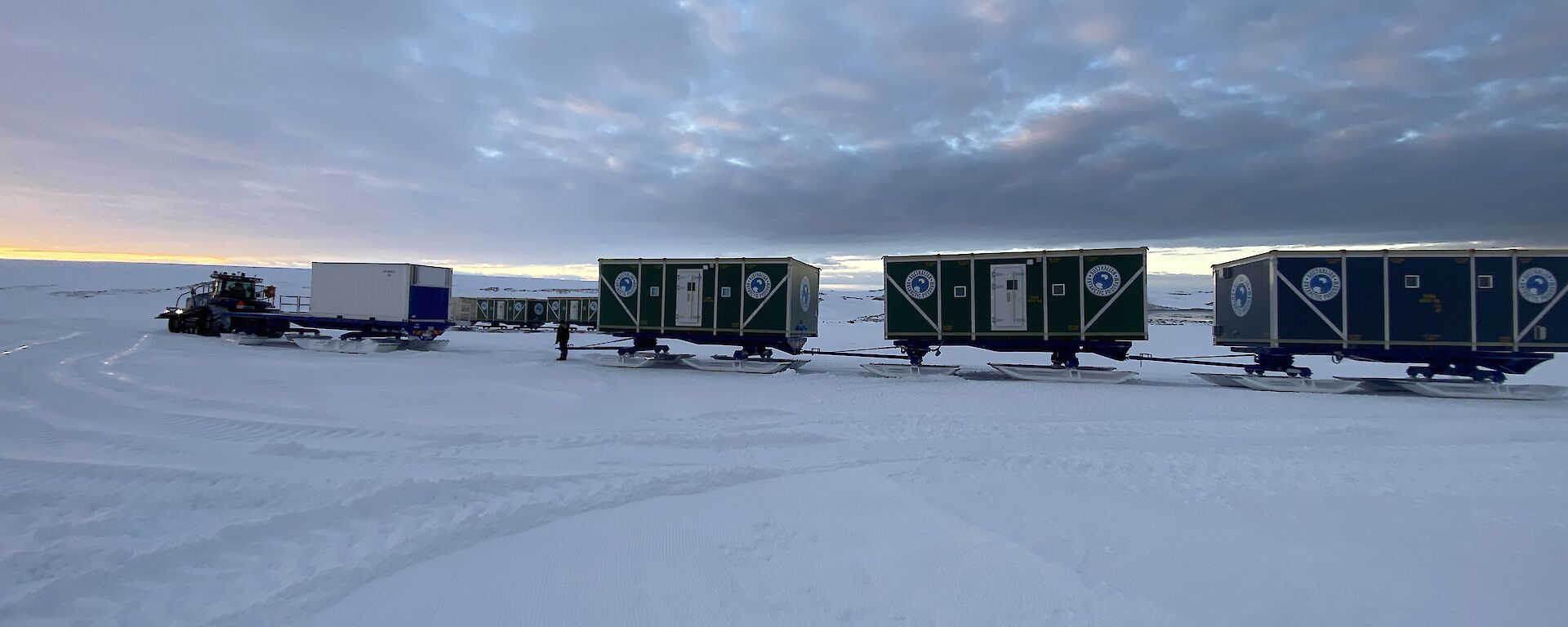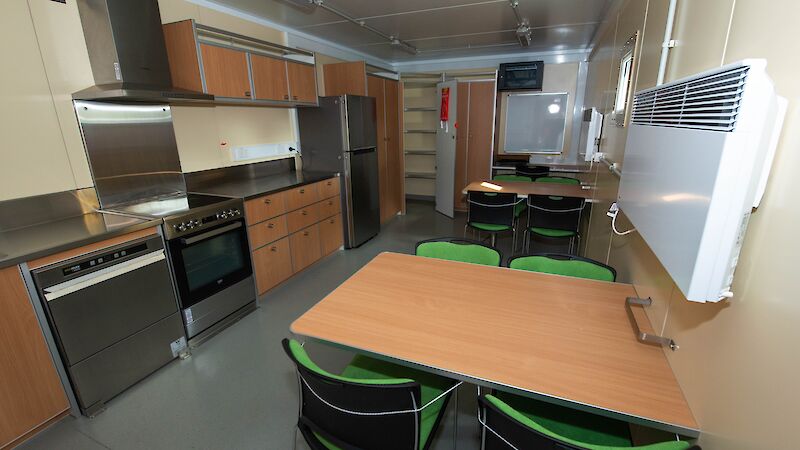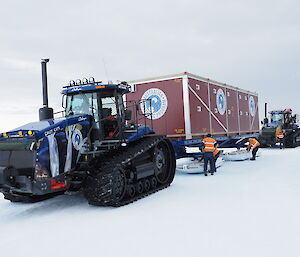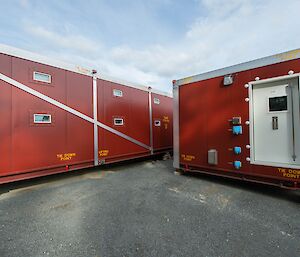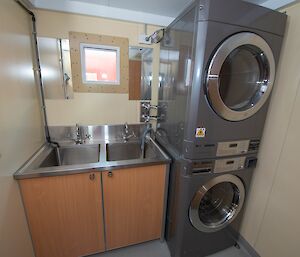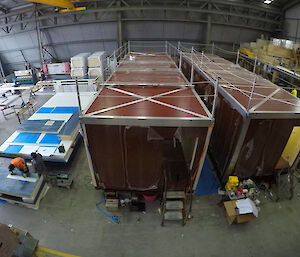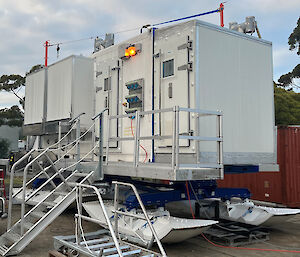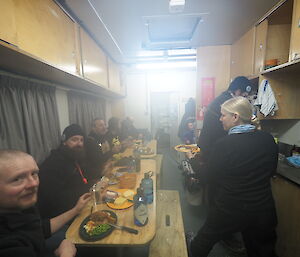The 40 square metre living and dining van provides 10 weary travellers with a warm, relaxing space after hours of travel each day.
Creature comforts
The living van incorporates kitchen, dining, laundry and shower facilities, including a waterless incinerator toilet.
The front entry provides a drying area for snow-covered boots and coats. Stainless steel benches, an oven, microwave, fridge, bread maker and dishwasher, provide modern kitchen conveniences. A 500-litre snow melter allows the team to produce enough potable water for the evening and following morning’s needs.
Any food scraps are placed into a waste compactor, and grey water from the laundry and shower is stored in a holding tank.
Electric power, heat and light are provided by a generator van housing twin Caterpillar 60KVA sets.
Built of tough stuff
Assembling the vans to fit the extreme conditions expected was a painstaking task.
Each living van is made of robust but lightweight insulated aluminium panels. The vans are designed to sit on bespoke, interchangeable steel sleds.
Everything inside the van has been designed with the difficult conditions in mind. There are latches on doors, and everything is bolted to the floor or walls, to ensure things don’t come adrift while underway. Each of the small windows are fitted with two double glazed panels to reduce the cold.
To stop indoor frosting, there can be no cold air paths from outside to inside.
The whole traverse fleet is protected against temperatures down to –50 degrees. The remote station vans, which will remain in the field over winter, are ‘winterised’ down to –85 degrees.

